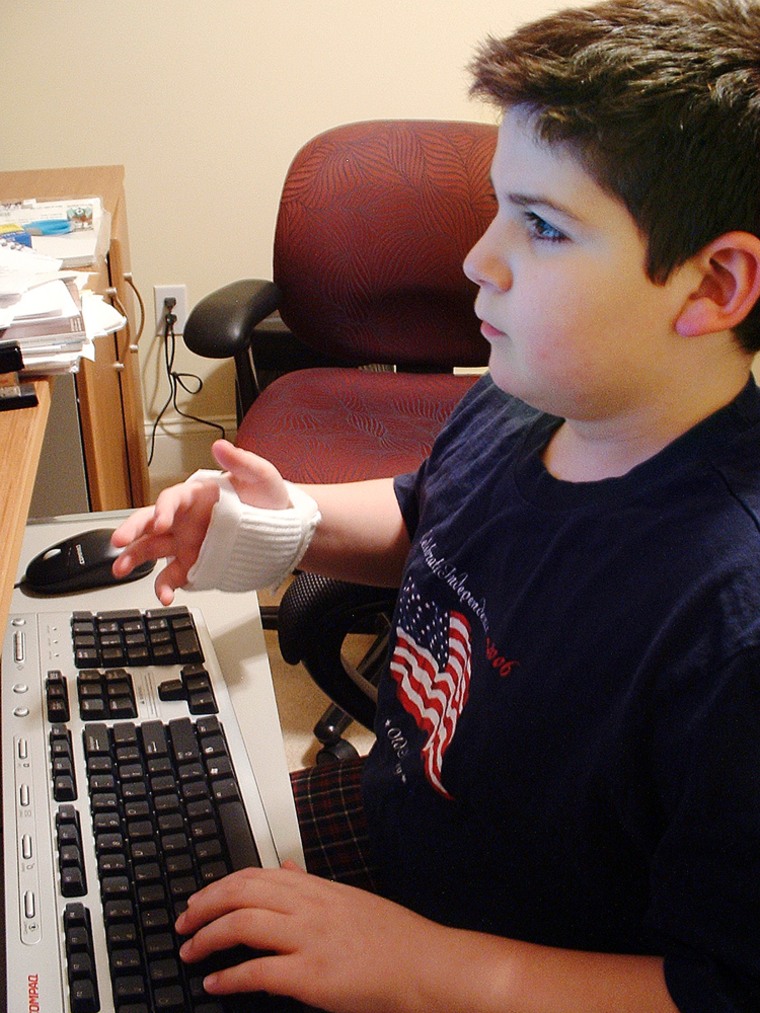It's the stuff that many people find addictively fun to pop after opening a fragile package.
But for a group of young inventors, Bubble Wrap is more than something to stomp on, it's a source of inspiration. To 11-year-old Kayla Weston, it's a building material for shock-absorbing flooring for dancers; 11-year-old Max Wallack used it to create wrist cushions for carpal tunnel syndrome sufferers.
"What's better than resting on air?" asked Wallack, of Natick, Mass.
Wallack is among 15 semifinalists competing in the second year of the Bubble Wrap Competition for Young Inventors, sponsored by Sealed Air Corp., the Elmwood Park, N.J.-based creator of the packaging material. More than 1,400 entries were received from students in 39 states.
Wallack said he spent months creating Bubble Wrap-filled socks with elastic and fabric fastener to tie around the wrists of people with carpal tunnel syndrome. He asked his grandmother to try out his prototypes.
"I wanted to help her because she had all these cumbersome splints, things that didn't help at all," Wallack said. "Before she had surgery, she was wearing it and it usually helped."
The contest, administered by the Akron, Ohio-based National Museum of Education, was promoted in schools across the country, and was limited to students in grades five through eight. Contest entries had to be original inventions that incorporated the use of clear Bubble Wrap brand cushioning. Company officials say it's possible some of the student inventions could be used to create new products.
The competition encourages the type of inventiveness demonstrated by Sealed Air's founders 47 years ago, when they realized a decorative wall covering they had designed actually made good cushioning for items being shipped, according to Rohn E. Shellenberger, a company manager.
Other semifinalists used Bubble Wrap to create a coin bank, a kite kit, a plant shelter, a teaching tool for blind people learning Braille, and wallpaper designed to engage and stimulate children with autism.
"What better way to celebrate a great invention than to try to encourage America's youth to take the product and try to reinvent something else out of the same product?" said Shellenberger, who manages the company division that includes Bubble Wrap.
Founded in 1960, Sealed Air sells a variety of packaging products around the world. The company had about $4.3 billion in revenue during its fiscal year ending Dec. 31, 2006, with profits up 7.2 percent to about $274 million.
All 15 semifinalists will at least get a $500 U.S. savings bond. Sealed Air, along with the National Museum of Education, will announce three finalists in January, with a grand prize winner receiving a $10,000 U.S. savings bond at a Jan. 28 awards ceremony in New York City.
Weston, of Longwood, Fla., sandwiched Bubble Wrap between two sheets of plywood, and nailed a frame around it to create a shock-resistant floor for dancing.
"Right now, my dance studio is a warehouse, so we just have wood, so when we're landing it's a very hard floor. So with the Bubble Wrap, it would be able to able to absorb all of the landings and it would give everyone a cushion," Weston said.
